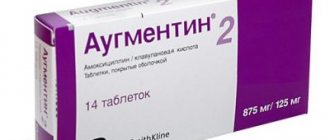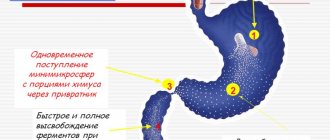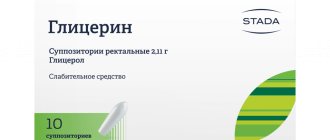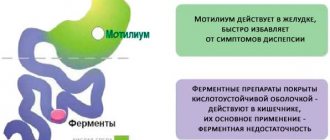"HAVRIX" - vaccination against hepatitis A
Hepatitis A viral inactivated antigen
Manufacturer: GlaxoSmithKline Biologicals, Belgium.
Protects against viral diseases: hepatitis A.
Trying on:
- Vaccine "Havrix 720 units" - for vaccination of children under 16 years of age.
- Vaccine "Havrix 1440 units" - for vaccination of children over 16 years of age and adults.
Not included in the national calendar of preventive vaccinations in Russia.
general description
HAVRIX is a vaccine designed to provide active immunization against disease caused by hepatitis A virus (HAV). It is approved for use by people aged 12 months and older. Primary immunization should be carried out at least 2 weeks before expected exposure to HAV.
The hepatitis A virus belongs to the picornavirus family. It is one of several hepatitis viruses that cause systemic liver disease.
The incubation period for hepatitis A averages 28 days (range 15 to 50 days). The course of treatment depends on the severity of the disease. Hepatitis A infection is extremely varied, ranging from asymptomatic infection to icteric hepatitis, which is fatal.
The presence of antibodies to HAV provides protection against hepatitis A infection. However, the minimum titer required to provide protection has not been determined.
Possible side effects
Pain and redness at the injection site, fatigue, malaise, fever (≥ 37.5°C), injection site reactions (such as swelling or induration), diarrhea, nausea, vomiting, headache, drowsiness, loss of appetite.
Anaphylaxis, allergic reactions, including anaphylactoid reactions and symptoms of an allergic condition resembling those of serum sickness. Cramps. Vasculitis. Angioedema, urticaria, erythema multiforme. Arthralgia.
Havrix should be administered with caution to patients with thrombocytopenia or bleeding disorders as bleeding may occur in these patients following intramuscular injection. After the injection, such patients should apply a pressure bandage (but do not rub) for at least 2 minutes. The vaccinated person must be under medical supervision for 30 minutes after immunization.
Come get vaccinated at VIRILIS. A full range of vaccines for children and adults, family vaccinations - at a special price!
Compound
Each 1 ml dose of the vaccine for adults contains 1440 EL.U. viral antigen adsorbed onto 0.5 mg of aluminum in the form of aluminum hydroxide. Each 0.5 ml dose of vaccine for children contains 720 EL.U. viral antigen adsorbed onto 0.25 mg of aluminum in the form of aluminum hydroxide.
The virus (strain HM175) replicates in human diploid MRC-5 cells. After removal of the culture medium, the cells are lysed to form a suspension. This purification is carried out using ultrafiltration and gel permeation chromatography procedures. Treatment of this lysate with formaldehyde inactivates the viruses. Viral antigen activity follows the standard established using an enzyme-linked immunosorbent assay (ELISA) and is therefore expressed in ELISA Units (EL.U.).
Compatibility with other vaccines
The Havrix vaccine can be administered simultaneously with such vaccines of the National Preventive Vaccination Calendar and the Preventive Vaccination Calendar for epidemic indications, such as: a vaccine for the prevention of typhoid fever, a vaccine for the prevention of yellow fever, a vaccine for the prevention of tetanus, monovalent and combined vaccines for the prevention of measles, mumps , rubella, chickenpox.
When administered simultaneously with human immunoglobulins, the protective effect of the vaccine is not reduced.
If it becomes necessary to administer the Havrix vaccine with other vaccines or with immunoglobulins, the drugs are administered using separate syringes and needles in different parts of the body.
Description
HAVRIX (hepatitis A vaccine) is a sterile suspension of inactivated virus for intramuscular injection.
HAVRIX is administered intramuscularly.
Children and teenagers:
- single dose 0.5 ml and revaccination 0.5 ml;
- the dose is administered 6 to 12 months later.
- administer a single dose of 1 ml and a booster dose of 1 ml;
- 6 to 12 months later.
Adults:
Shake the suspension well before use. When thoroughly mixed, HAVRIX is a homogeneous, cloudy, white solution. Do not enter unless otherwise indicated. Parenteral drugs should be inspected visually for particulate matter and discoloration before administration. If there is any deviation from these conditions, the vaccine should not be administered. For prefilled syringes, attach a sterile needle and inject intramuscularly.
Indications for vaccination "Havrix"
Children and adults who are or will be at risk of contracting viral hepatitis A should be vaccinated:
- people living in areas with high incidence of hepatitis A;
- children and adults traveling on vacation or for work to regions with a high incidence of hepatitis A (military personnel, travelers, etc.);
- children and adults visiting swimming pools;
- children and adults visiting public catering places (restaurants, cafes);
- people who are contacts of hepatitis A outbreaks;
- people at occupational risk of infection: medical personnel and patient care personnel (especially in infectious diseases, gastroenterological and pediatric departments); staff of preschool institutions; sewer and water supply workers; food industry and catering personnel;
- persons from special risk groups (patients with chronic liver disease or an increased risk of liver disease; patients with hemophilia; patients with multiple blood transfusions; drug addicts; homosexuals; persons who are promiscuous).
Special conditions
Warnings and precautions include:
- Prefilled syringe caps contain natural rubber latex, which may cause allergic reactions.
- Fainting (loss of consciousness) may occur due to injectable vaccines, including HAVRIX. Procedures must be on-site, with a physician present, to avoid injury from falls and restore cerebral perfusion after syncope.
The safety and effectiveness of HAVRIX in pregnant women and nursing mothers have not been established.
Contraindications
Only a doctor can decide whether Havrix is suitable for a child to be vaccinated
Vaccination with Havrix is contraindicated if there is a history of an allergic reaction to any component of the vaccine and in the following cases:
- Acute infectious and non-infectious diseases, exacerbations of chronic diseases. The vaccination is carried out no earlier than 1 month after recovery (remission).
- Severe reaction (temperature above 40°C; hyperemia, swelling at the injection site with a diameter of more than 8 cm) with the previous administration of the drug.
- Immunodeficiency conditions, malignant blood diseases and neoplasms.
- Pregnancy.
- Hypersensitivity to any component of the vaccine.
- Hepatitis A seropositivity
Avaxim, Algavak or Havrix: which is better to use for hepatitis A?
All these vaccines are interchangeable, despite different manufacturers and differences in manufacturing technology. Everywhere the active component is killed HAV viruses.
Avaxim vaccine
Avaxim, like Havrix, is designed for children from one to 15 years of age at a dosage of 80 units/dose. For adult vaccinators – 160 units/dose. Lasting immunity is achieved by 2-fold vaccination.
Algavac is a domestic development. It differs in that immunization is indicated for children after 3 years of age, but otherwise is similar to Avaxim and Havrix. All vaccines have similar contraindications and possible complications.
If you decide to get vaccinated against hepatitis A, be sure to consult your doctor.
Pharmacological properties
Pharmacodynamics
Havrix is a vaccine that provides preventive protection against hepatitis A virus (HAV) through the formation of specific immunity by inducing the production of antibodies against HAV and by activating cellular immune mechanisms. Long-term preservation of immunity is ensured by double vaccination with an interval of 6–12 months.
In special studies on the kinetics of the immune response, it was found that after a single administration of Havrix, early and rapid seroconversion is achieved. Already 13 days after vaccination, the number of patients with a protective antibody titer (> 20 mIU/ml) is 79%. As the period after the vaccine is administered increases, this figure increases significantly.
Long-term protection against HAV is provided by a second dose (booster) 6–12 months after the primary immunization. Booster vaccination given 12–60 months later to individuals who received the primary Havrix vaccine also provides an adequate immune response.
Available data allow us to conclude that if the immune status of a person remains unchanged, after a course of vaccination, including the administration of vaccination and revaccination doses, there is no need for repeated revaccination.
Pharmacokinetics
Data on the pharmacokinetics of Havrix are not provided.
Hepatitis A vaccine “Havrix” 720 (for children), “Havrix” 1440 (for adults)
Smith GlaxoSmith Klein, England
Release form: 1 syringe / 1 dose / 0.5 ml (for children from 1 year to 18 years inclusive); 1 syringe / 1 dose / 1 ml (for adults over 19 years old).
Vaccination schedule: twice, day 0 – 6(12) months.
INSTRUCTIONS FOR USE of the vaccine against hepatitis A "Havrix"
| Suspension for injection | 0.5 ml |
| inactivated hepatitis A virus (strain HM 175) | 720 units ELISA |
The drug contains formaldehyde-inactivated hepatitis A virus (strain HM 175 hepatitis A virus), adsorbed on aluminum hydroxide. 1 dose (0.5 ml) - single-dose syringes (1) - cardboard packs. 1 dose (0.5 ml) - bottles (1) - cardboard packs. 1 dose (0.5 ml) - bottles (10) - cardboard packs. 1 dose (0.5 ml) - bottles (25) - cardboard packs. 1 dose (0.5 ml) - bottles (100) - cardboard packs.
| Suspension for injection | 1 ml |
| inactivated hepatitis A virus (strain HM 175) | 1440 units ELISA |
The drug contains formaldehyde-inactivated hepatitis A virus (strain HM 175 hepatitis A virus), adsorbed on aluminum hydroxide. 1 dose (1 ml) - single-dose syringes (1) - cardboard packs. 1 dose (1 ml) - bottles (1) - cardboard packs. 1 dose (1 ml) - bottles (10) - cardboard packs. 1 dose (1 ml) - bottles (25) - cardboard packs. 1 dose (1 ml) - bottles (100) - cardboard packs.
Registration No.: susp. d/inject. 720 ELISA units/1 dose: syringe 0.5 ml 1 pc., vial. 0.5 ml 1.10, 25 and 100 pcs.; susp. d/inject. 1440 ELISA units/1 dose: syringe 1 ml 1 piece, vial. 1 ml 1, 10, 25 and 100 pcs. — P No. 013236/01-2001 07/26/01
pharmachologic effect
Vaccine for the prevention of hepatitis A. Promotes the formation of immunity against the hepatitis A virus (HAV), causing the production of specific anti-HAV antibodies and the formation of memory lymphocytes. In clinical studies that included individuals aged 18 to 50 years, the formation of antibodies to the hepatitis A virus antigen was detected in more than 88% of those vaccinated on day 15 and in 99% 1 month after administration of one dose of the Havrix vaccine (containing 1440 ELISA units). In clinical studies that included individuals aged 1 to 18 years, the formation of antibodies to the hepatitis A virus antigen was detected in more than 93% of those vaccinated on day 15 and in 99% 1 month after administration of one dose of Havrix (containing 720 ELISA units). To provide longer-term protection against infection, a second dose is recommended. Clinical studies have shown that the use of the Havrix vaccine is effective in the early incubation period of the disease, incl. during outbreaks and foci of infection in the family. The Havrix vaccine does not reduce its effectiveness if there are maternal antibodies to the hepatitis A virus or passively administered antibodies to the hepatitis A virus in the blood of the vaccinated person. Simultaneous administration of normal human immunoglobulin or specific immunoglobulin to the hepatitis A virus with the Havrix vaccine is allowed in both children and adults. Two doses of the Havrix vaccine, administered at intervals of 6-12 months, provide protection against clinically manifest forms of hepatitis A for a period of at least 20 years.
Pharmacokinetics
Data on the pharmacokinetics of Havrix are not provided.
Indications
Conduct active immunization of individuals at increased risk of developing hepatitis A or living in areas with high incidence of hepatitis A. In regions of moderate or high endemicity, hepatitis A vaccination is recommended for the entire susceptible population. In areas with low or moderate endemicity of hepatitis A, immunization with Havrix is particularly recommended for persons at increased risk of infection, persons in whom hepatitis A may be severe, or persons whose occupational status of hepatitis A may lead to outbreaks. , including: – persons traveling to hyperendemic regions or to regions where an outbreak of hepatitis A is registered; – employees of military units stationed in areas with unsatisfactory sanitary conditions or unguaranteed water supply; – persons whose disease with hepatitis A, due to their professional background, can lead to outbreaks and for whom there is an occupational risk of contracting the hepatitis A virus: employees of schools and preschool institutions, nursing and junior medical personnel (especially in infectious diseases, gastroenterological and pediatric hospitals) preventive institutions), workers of sewerage systems and water treatment facilities, workers of public catering and food industry enterprises (food warehouses), personnel of closed institutions of the GUIN system, social security and medical institutions; – persons living or located in a hepatitis A outbreak (including family) or living in areas where outbreak incidence is registered; – persons with a behavioral risk of contracting the hepatitis A virus (homosexuals, people who are promiscuous, drug addicts who inject drugs); – patients with hemophilia; – persons who have household contacts with an infected person (the virus can be shed over a fairly long period of time; therefore, vaccination is recommended for all persons in contact with an infected person); – population groups with a known high incidence of hepatitis A or those population groups in which the incidence of hepatitis A is increased due to poor sanitary and hygienic conditions; – persons with chronic liver diseases or an increased risk of liver diseases (chronic carriers of hepatitis B, C, delta viruses; persons with chronic hepatitis of alcoholic, autoimmune, toxic, drug and other origins, persons with Konovalov-Wilson disease, hepatoses and hepatopathies).
Dosage regimen
Adults aged 19 years and older receive one dose (1 ml) of Havrix vaccine, which contains 1440 ELISA units, for primary immunization. Children and adolescents (from 12 months to 18 years inclusive) are given 1 dose (0.5 ml) of the Havrix vaccine, which contains 720 ELISA units, for primary immunization. To ensure long-term protection against infection, a second vaccination is recommended 6-12 months after the first dose of the age-appropriate dosage. In some cases (for persons traveling to regions with an increased incidence of hepatitis A for a short period of time, for military personnel performing temporary operations in these areas), a single vaccination with Havrix is allowed. Rules for administering the vaccine The Havrix vaccine is intended for intramuscular administration. Cannot be used intravenously. The vaccine is not recommended to be administered intramuscularly into the gluteal muscle and subcutaneously or intravenously, as this may reduce the intensity of the humoral immune response. For adults and older children, the vaccine is injected into the deltoid muscle. For children over 12 months and during the first years of life, the vaccine is administered into the anterolateral region of the femoral muscle. During storage, a thin white precipitate with a clear, colorless supernatant may form. Before use, it is necessary to visually examine the vaccine for the presence of foreign mechanical particles. Before administering the drug, the vial must be shaken well until a homogeneous cloudy white suspension is formed and make sure that the vaccine has reached room temperature. After immunization, the patient should be under medical supervision for 30 minutes.
Side effect
From the central nervous system: headache, malaise, increased fatigue. Local reactions: pain at the injection site (severe - less than 0.5%); about 4% - hyperemia, induration, swelling. Other: fever, nausea, loss of appetite. The administration of the Havrix vaccine is easily tolerated by the body. Systemic adverse reactions were predominantly mild, the duration of most of them did not exceed 24 hours. The frequency of these reactions varied from 0.8% to 12.8%. All reactions did not require treatment. The nature of adverse reactions and symptoms in children were the same as in adults, but in children adverse reactions occurred with less frequency. The incidence of reported adverse reactions in subjects surveyed after the second vaccination with Havrix vaccine was significantly lower. The majority of the observed adverse events were assessed by the subjects as mild, their duration did not exceed 24 hours. The frequency of adverse reactions to the administration of the Havrix vaccine did not exceed that to the administration of other vaccines containing purified viral antigen adsorbed on aluminum hydroxide.
Contraindications
– febrile conditions of any origin; – hypersensitivity to the components of the drug. For mild ARVI and acute intestinal infections, vaccination can be carried out immediately after recovery.
Pregnancy and lactation
The drug is prescribed during pregnancy only if absolutely necessary. There have been no studies of the effect of the use of the Havrix vaccine on fetal development, however, as with the use of other inactivated vaccines, the danger to the fetus when vaccinating the mother can be considered absolutely insignificant. The need for vaccination during lactation (breastfeeding) should be carefully considered, despite the fact that the danger to the child in this case is extremely low. Clinical studies of the effect of the Havrix vaccine on infants when administered to nursing mothers have not been conducted.
special instructions
Caution should be exercised when administering the drug to persons with thrombocytopenia and a tendency to hemorrhage, which is associated with an increased risk of developing hematoma after intramuscular administration of the drug. Due to the long incubation period of viral hepatitis A (up to 21 days on average), the disease can develop over a certain period after vaccination. In many cases, vaccination carried out during the incubation period prevents the development of the disease. Patients on hemodialysis and patients with impaired immunity require additional doses of the vaccine. In cases where the patient is at high risk of contracting the hepatitis A virus, it is possible to co-administer Havrix and immunoglobulin against the hepatitis A virus. Havrix can be administered simultaneously with other inactivated vaccines (in different parts of the body). Use in pediatrics There is experience in mass use of the Havrix vaccine in children under 12 months of age . Impact on the ability to drive vehicles and operate machinery It is unlikely that the administration of the Havrix vaccine will affect the ability to engage in potentially hazardous activities that require increased attention.
Overdose
Currently, no cases of overdose with Havrix have been reported.
Drug interactions
The Havrix vaccine is compatible with all vaccinations of the National Vaccination Calendar of the Russian Federation and all vaccines for travelers. If it is necessary to administer Havrix at the same time as other inactivated vaccines, injections should be given at different sites using different syringes. Simultaneous administration of the Havrix vaccine with vaccines against typhoid fever, yellow fever, cholera (injectable), tetanus does not lead to a decrease in the immune response to the Havrix vaccine, does not affect the immunogenicity of simultaneously administered vaccines and does not lead to a change in the frequency, type and duration of reactions to vaccine administration . Pharmaceutical incompatibility The Havrix vaccine should not be mixed with other vaccines in the same syringe.
Storage conditions and periods
The vaccine should be stored at a temperature of 2° to 8°C; do not freeze. Shelf life: 3 years. The expiration date is indicated on the packaging. Conditions for dispensing from pharmacies The drug is dispensed with a prescription.
← Back
Reviews about vaccination
When there is a large selection of vaccines, it is always difficult to decide on a preference.
It is advisable to consult a pediatrician; he will provide comprehensive information on all medications. Among those who have already received anti-hepatitis immunization, there are many supporters of imported vaccine options:
- Valeria, Samara. I gave both my sons Havrix, and the revaccination was Avaxim. Everything went perfectly;
- Oksana, Cheboksary . I am also in favor of imported ones. I will give my daughter Havrix;
- Veronica, Krasnodar . And I was quite satisfied with Algavac M. I vaccinated myself. There was slight weakness and nothing more. The main thing at the time of vaccination is not to get sick and listen to the doctor’s advice.
How do you feel about mandatory vaccination?
- Positively, it prevents many diseases. 60%, 2676 votes
2676 votes 60%2676 votes - 60% of all votes
- Negatively, these are all government schemes to make it easier to manage us. 27%, 1188 votes
1188 votes 27%
1188 votes - 27% of all votes
- Neutral, I don’t think it has any effect on my health. 13%, 601 votes
601 votes 13%
601 votes - 13% of all votes
Total votes: 4465
Voted: 4439
January 17, 2018
×
You or from your IP have already voted.







